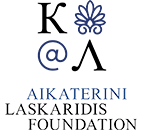Black Sea (155 Subjects)
Map of the Don-Volga canal. Initially envisioned by the Ottomans and later by the Russians, the canal, which connects the Sea of Azov to the Caspian Sea was only completed in 1950.
Castle at the Black Sea. The author states that he saw this depiction on the reverse of an ancient Greek coin, discovered in the area.
Observatory from which the Tatars of Kuban watched the movements of their Kirkassian neighbours. According to the author, in summer a fire was lit in these nests to keep the mosquitoes away.
Sarcophagus from Asiatic Sarmatia (historical region west of the Caspian sea), used as a cistern, at the surroundings of Yeni Kale fortress in Crimea.
View of the Cimmerian Bosporus or Strait of Kerch (where the Black Sea joins the Sea of Azov). On the bottom right, Taman volcano, surnamed Prekla (hell) by the locals.
Coins of the kingdom of Cimmerian Bosporus (southern and eastern shores of the Sea of Azov), in the author's collection.
View of Cimmerian Bosporus or Strait of Kerch withn the port of Kerch (anc. Panticapaeum), Crimea. In the background, the coast of Phanagoria, today Taman peninsula, Russia.
View of the bay of Balaklava near Sebastopol, Crimea. In the background, the remains of the Genoese fortress.
Coin of ancient Borysthenes or Pontic Olbia, a city in Sarmatia (historical region west of the Caspian Sea), near the mouth of Dnieper river.
Ancient Greek inscription from the city of Pontic Olbia or Borysthenes, seen by the author at a church in Mykolaiv, Ukraine.
Ancient Greek inscription from the city of Pontic Olbia or Borysthenes, seen by the author at a church in Mykolaiv, Ukraine.
Byzantine inscription from Pontic Olbia or Borysthenes, seen by the author at a church in Mykolaiv, Ukraine.































